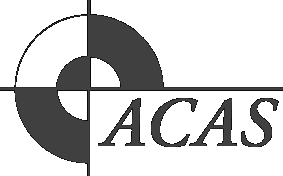
Risk management
Based on ISO 9001
- ACAS manages risk across all its activities.
- Risk is defined as the possibility of something happening that will impact on organisational objectives. Risk arises out of uncertainty and comprises (a) frequency or likelihood of something happening and (b) Severity or impact of the consequences resulting from the event.
- Risk Management is the culture and process for systematically applying policies and procedures to identify, assess, treat, monitor and communicate risks. The purpose is to effectively manage potential opportunities and adverse effects.
- The purpose is to:
- to implement risk management within ACAS according to best practice guidelines
- to integrate risk management into the management culture of ACAS
- to foster an environment where staff assume responsibility for managing risks
- to foster an environment where staff assume responsibility for managing risks
- to prevent abuse include sexual abuse) of vulnerable people related to ACAS's services and activities
- Each ACAS location shall:
- identify and record risks
- determine the priority of risk by assessing the extent of harm and the likelihood of occurrence
- take actions to manage significant risks, and
- monitor the effectiveness of actions taken.
- Risk management may be integrated into quality management and continual improvement.
- Risk management is reported to the Board.
